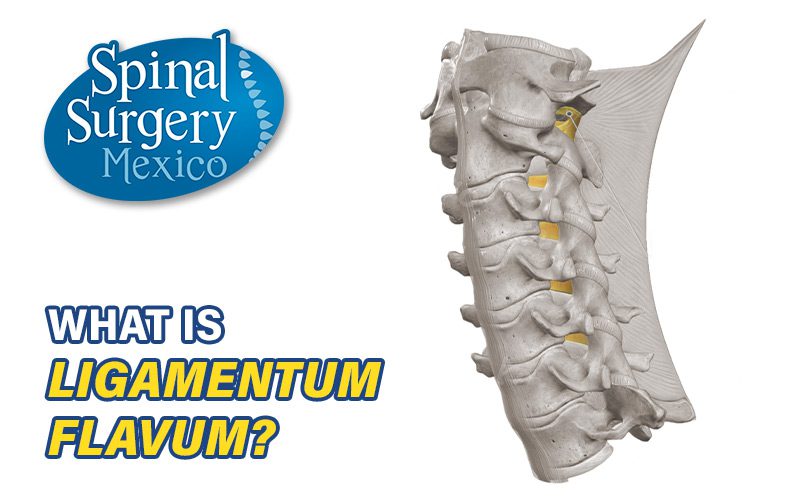The ligamentum flavum (continued)
Ligamentum flavum undergoes slight fibrotic and chondrometaplastic changes with aging. In spinal stenosis, the density of the ligaments is reduced, possibly causing a bulge into the spinal canal in the standing position.
Function
The ligamentum flavum becomes stretched with flexion of the spine. The marked elasticity of the ligamentum flavum serves to preserve upright posture and to assist the vertebral column in resuming it after flexion. The elastin, fairly unique to the ligamentum flavum among other ligaments, prevents buckling of the ligament into the spinal canal during extension, which would cause spinal cord compression.
Clinical significance
Because these ligaments lie in the posterior part of the vertebral canal, their hypertrophy can cause spinal stenosis, particularly in patients with diffuse idiopathic skeletal hyperostosis. The ligamentum flavum may also become fatty or calcified during aging. These cause degeneration of elastin.
Some studies indicate that the hypertrophy of these ligaments may be linked to a fibrotic process associated with increased collagen VI, which could represent an adaptive and reparative process in response to the rupture of elastic fibers.
Epidural
During an epidural, the needle has to be inserted into the epidural space through the lygamentum flavum. Once it passes through, this is felt as a decrease in the pressure requited to further advance the needle. This makes the ligamentum flavum an important landmark to overcome to ensure proper needle placement.
Removal
During a microdiscectomy, a procedure to remove part of an intervertebral disc that is pressing on the spinal nerves, the lygamentum flavum may need to be removed or reshaped. A hook can be placed underneath the ligamentum flavum to ensure it is separated from the dura mater.
*Credit: This article incorporates text in the public domain from page 290 of the 20th edition of Gray’s Anatomy (1918).

